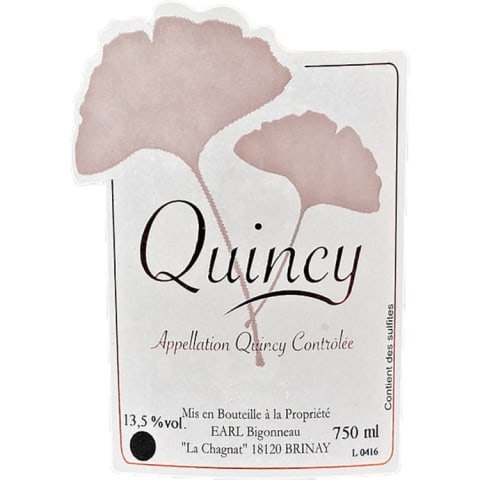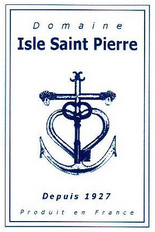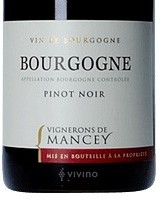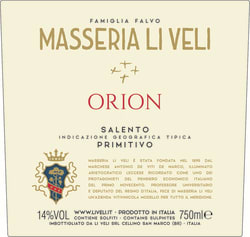BOHIGAS XAREL·LO
Bigonneau Quincy
Isle St-Pierre Rosé
Vignerons de Mancey Bourgogne Rouge
Ca’ Gialla langhe nebbiolo
Li Veli Primitivo Orion
BOHIGAS XAREL·LO (ORGANIC)
Xarel·lo is a white grape variety of Spanish origin specially grown in Catalonia. With Macabeu and Parellada, is one of the three traditional varieties used to make the sparkling wine Cava. It also makes a bracingly refreshing table wine, as evidenced in this staff and store favorite.
Aged completely in stainless steel, Bohigas Xarel·lo is a light to medium-bodied wine, with crisp, fresh acidity and hints of citrus oil and green apple skins on the nose.
Made using organically farmed grapes, grown at high elevations, the juice macerates for a few hours in contact with the skins prior to being fermented in stainless steel vats. The wine sees no aging in tank before bottling, resulting in a fresh and clean wine with bright flavors.
Since the 13th century, the same family has been farming the land around Fermi Bohigas in the northern Penedes region of Catalunya at the foot of the majestic Monserrat range, about an hour northwest of Barcelona outside the town of Odena in the Anoia river valley. Jordi (father) and Maria (daughter) Casanovas are the 35th and 36th generation living on the property since the time of the Moorish occupation when the neighboring hillside served as the final outpost for the Catalans. The 650 acre estate is split between two properties, “Can Maciá” and “Can Batllevell”. Olive trees, wild garrigue and 260 acres of grapes are grown on the two properties and the Bohigas wines come exclusively from the Can Maciá section.
The farming here is organic, and the northern and higher altitude location make for a perfect micro-climate than tends to be cooler than the rest of the region. The old farm house adjoins a century old winery which sits atop cave cellars that are still actively used for the production of sparkling Cava, which the family has been producing from only their own vineyards since 1929. The vinifications are done in modern, stainless steel vats with perfect control of temperature and cleanliness while the cellars are still used for hand riddling of the Cava bottles.
The commitment to quality viticulture extends into the cellar where they produce balanced, mineral-driven wines that can only come from the Jura. The wines always exhibit a focused purity and intensity of flavor which maintain the cool climate typicity of this mountainous region.
Bigonneau Quincy (organic)
Located between Méreau and Brinay and isolated in the middle of vast fields of cereal crops, Domaine Gerard Bigonneau vinifies both AOC Quincy and Reuilly. This family-owned estate has been in existence for several generations. At the turn of the 80s, current owner Gerard Bigonneau planted a 40 acre vineyard on the slopes of Reuilly.
In 2006, he consolidated his efforts and built a purpose-built cellar on La Chagnat, and brought in his daughter, Virginie to take control of production. Prior to this, Virginie had been the winemaker at the local co-operative winery, after having studied in Dijon as well as working in cellars in Champagne, Burgundy, and Alsace. The consolidation to a single cellar, conversion to organic farming, and the arrival of Virginie has brought about a real focus to the wines.
Their Quincy bottling is textbook SB – made from 20-year-old vines that are pressed, vinified, and aged in steel. Full of ripe apple and white currant fruit flavors, it’s fresh, but also has a steely edge that gives a strong texture. Perfect with shellfish, goat cheeses, salads, and lighter fare.
Isle St Pierre Rosé (Sustainable)
Founded in 1927, Domaine Isle Saint Pierre is located on a small island in the Rhône River. It is run today by fourth-generation vigneron Julien Henry. The proximity to the water provides a cooling influence that allows the wines to retain great freshness even in the far south of France, and deep well-draining sedimentary soils comprised of sand and silt. Because of the terroir and temperature, they are able to grow varietals that thrive in a Continental climate, such as Merlot, Cabernet Franc, Chardonnay, and Sauvignon.
In 2018, the estate received the Vignerons Développement Durable certification in recognition of its commitment to sustainable wine growing.
Isle Saint Pierre is a small island in the Rhône River, located south of Arles and 10 miles away from the Mediterranean in the heart of the Camargue region.
In 1927, Parisian wine merchant Pierre Chassaing founded Domaine Isle Saint-Pierre and devoted himself to cultivating vines and raising sheep. A few vines remain from that time, together with a flock of 200 sheep that provides the manure needed to nourish the vines. The proximity to the water means that the island enjoys a coastal climate (with a cooling influence from the nearby bodies of water) and deep, well-draining sedimentary soils comprised of sand and silt.
Though the estate dates from the 1920s, it wasn’t until 1972 when the next generation set about replanting the vineyard with noble vines grafted onto American rootstock. Because of the terroir and temperature, they are able to grow varietals that thrive in Continental climates. For red wines as well as for the rosé, the main varieties are Merlot, Cabernet Franc, Petit Verdot, Carmenere, and Arinarnoa (a cross between Merlot and Petit Verdot).
Today, fourth-generation vigneron Julien Henry farms sustainably with careful attention paid to the leaf system of the vine. The goal is to achieve the right balance between grape production and the leaf surface exposed to sunlight. Working the soil enables the vines to establish a deep root system, which protects them from the summer droughts. Through careful viticulture and maintaining low yields, the estate is able to harvest its vineyards by the 15th of September before the arrival of the rains which often fall as the season progresses into fall.
Although the Isle Saint Pierre wines come from the very southern stretches of France, they display wonderful freshness and aromatic appeal. At harvest, as soon as the grapes enter the cellar, they are cooled down to retain freshness. The rosé is a blend of Cab Franc, Merlot, Petit Verdot, Arinarnoa, Tannat, Carménère, Syrah.
Vignerons de Mancey Bourgogne rouge (Sustainable)
Les Vignerons de Mancey (the winemakers of Mancey) is a cooperative in the region of Burgundy (Bourgogne) and the terroir of the Mâconnais, popular for its famous Burgundy wines. More than 80% of Burgundy wines are produced from two grape varieties, Pinot Noir for reds and Chardonnay for whites. Two other main grape varieties are Gamay and Aligoté. For each of these wines, the methods are very specific and respect the precise specifications that govern Burgundy AOCs.
Founded in 1929, Les Vignerons de Mancey, a few miles from Tournus and Saône, is the heart of a privileged country. Terroir of the winery occupies the edge of the hills of southern Burgundy, open area, made of softness and curves on which climbing vines. The vines alternate with meadows and woods. Vignerons de Mancey meet currently producing some 80 winemakers of 340 acres of vineyards spread over eight towns around Mancey.
100% Pinot Noir.
The grapes are destemmed and go into stainless steel vats. The fermentation creates an increase in temperature, which helps maceration, resulting in the distribution of the color within the fermenting must. Fermentation lasts 8-10 days during which pumping-over operations are carried out and the temperature constantly monitored. The juice is then drawn off and the stalks and pulp are pressed. The free run and press juices are blended together in certain proportions. Some of the wine is then stored in vats and the remainder goes into barrels. After several rackings, bottling takes place in July. Drinks well for up to seven years.
Pale, light ruby color. On the nose, the wine is very expressive and open, releasing aromas of red fruit, such as red currants, cherries, and griotte cherries macerated in alcohol. It is supple on the palate, with nice cherry- stone-like fruit. It is a simple, delicate wine, at a very early stage of its development. Lovely, extremely fresh finish. This is a very easy to drink wine.
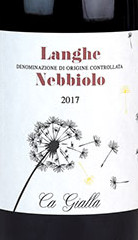 Ca’ Gialla Nebbiolo (Organic)
Ca’ Gialla Nebbiolo (Organic)
Marco Porello is the third generation of his family to produce wines in Roero. The family owns 40 acres of vineyard land in total, all highly regarded locations in two of Roero’s twenty-three villages…The marine clay-based Mombirone in the village of Canale, and Tanone in Vezza d’Alba, which is a sandy, limestone-rich site.
Climb up to the castle that sits above Marco’s home village of Canale and you’ll leave with a better understanding of how Roero fits into Piedmont as a whole – In simple terms to the South of the river you have the more famous (and more expensive) Langhe and where you stand (to the North of the river) you have the more humble (but often overachieving) Roero. Most people think Arneis when they think Roero, and while we love some Arneis this is shortsighted. Roero Nebbiolo and Barbera can be sensational and almost always come at a humble price.
Marco Porello is one of the most “known” names in Roero, and he produces two lines – His namesake Marco Porello line which is sourced from the estate’s oldest vines and sees a bit more wood, and a more value-oriented line called Ca’ Gialla, named after the yellow house on site inhabited by his mother and also made from 100% estate fruit, albeit with no new wood and slightly younger vines on average.
His Nebbiolo is a screaming deal! Cherry and licorice are balanced by acid and tannin, earthy and dry. A hint of tar. Good to pair with a variety of meals. Something to sip while waiting for your Barolo and Barbaresco to mature.
Masseria li veli primitivo orion (Organic, biodynamic)
“Masseria Li Veli is a stunning property that has been showing spectacular results in recent years…. It’s safe to say that Masseria Li Veli is on a fast trajectory to be one of the top estates in Southern Italy.” – Monica Larner, Wine Advocate
Masseria Li Veli is an imposing building on the southern most slopes of the Murge hills in the Salento peninsula, also known as the “heel of Italy”. The project is the realization of the Falvo family (previous owners of Avignonesi in Montepulciano, Tuscany) who have also strong ties to the region. The pre-existing stone structure dating to the late 19th Century has been transformed and enlarged, according to a well-planned and functional design in keeping with the style and layout of the original building.
Today, the estate comprises 35 hectares of vineyards with albarello training, planted with the traditional Apulian varieties: Negroamaro, Primitivo and Malvasia Nera. The family’s vision is to establish a new quality benchmark in the region both through vineyard management and vinification. Applying the knowledge and expertise gained at Avignonesi, the effort is to realize the ultimate potential for the local varieties with wines that have more primary fruit, freshness and structural acidity while still maintaining the character this dry, hot Mediterranean land provides.
Orion is 100% Primitivo (a clone of the grape that we call Zinfandel), grown in the northern Salento area of Cellino San Marco.
The name of this wine refers to the Greek “Oros” which means border. The term indicates the fortified road near Masseria Li Veli which divided the Byzantine possessions in the Salento from the Longobards, called precisely “Greek’s limit”.
Temperature-controlled fermentation takes place with délestages and circulation pumping in order to extract color and flavors from the skins. The wine is then transferred into French oak barriques for the malolactic fermentation, whereupon it ages for six months.
Dense ruby red with a purplish rim, it is immediately intense on the nose with marked aromas of ripe and fleshy red fruits, notably cherries followed by spicy notes of cinnamon and nutmeg; in the mouth it is full, powerful, smooth and very long, with a well defined acid streak which makes it fresh and pleasing.



